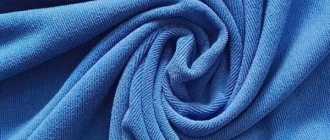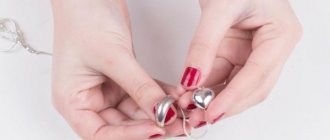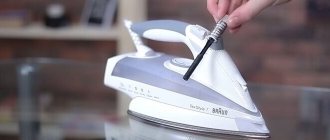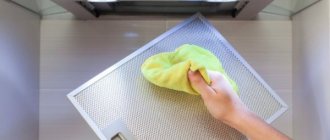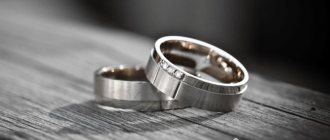If the monitor begins to poorly display the picture on the screen, the colors have faded and streaks have appeared, then the problem may be hidden not only in the matrix or dead pixels, but also in the presence of dirt on its surface.
To solve this problem, you don’t have to turn to professionals, but fix it yourself. Following a few simple rules will help you avoid damaging your equipment.
Some useful tips
Before you start cleaning your monitor or laptop screen, you should familiarize yourself with the following recommendations:
- The use of water (drinking or distilled) is permissible only for minor contamination. Lightly moisten a lint-free cloth with the liquid and wipe the surface;
- Removing moisture at the end of cleaning is a mandatory procedure. The exception to this rule is glossy monitors;
- Before purchasing an industrial cleaning product, you should read the instructions for it and read reviews from other users. It is possible that the liquid is not universal and cannot be used on some types of screens;
- It is strictly forbidden to use any aggressive chemicals for cleaning : alcohol, ammonia, acetone or any solvent;
- Abrasives, scrapers and hard objects are also prohibited. You cannot scrape the surface with a knife.
These tips are also relevant for cleaning LCD TVs, more details here.
Cleaning from dust
Dust is a natural process in nature and it is absolutely impossible to exclude it from life. Very often it settles on those surfaces that are most susceptible to static. A laptop monitor is no exception, especially if you live near roads or in the center of an industrial city. Dust brings a lot of inconvenience, so you need to get rid of it regularly.
The cleansing process looks like this step by step:
- turn off the laptop and let it cool down;
- choose the right material that will not electrify - cotton, high-quality cotton pad, microfiber;
- Wipe the monitor from top to bottom.
In the event that the dust has already become ingrained and it is impossible to clean it using the dry method, you need to know how to wipe the monitor without streaks. To do this, you should resort to more global methods, using special wipes and liquid crystal screen care products.
Types of pollution
The choice of care product directly depends on the type of contamination. Unfortunately, not only dust can settle on your computer screen, but also more serious stains from liquid, food, glue or ink.
Dust
Daily wet cleaning of the room cannot guarantee the cleanliness of the monitor. Once a week it is necessary to remove dust settled on its surface. To do this, just use a soft, dry cloth or lint-free wipe.
The method with a ball or plastic bag is also suitable for removing dust.
If dust is removed regularly, then these manipulations will be sufficient.
Insect marks
Insect stains can appear not only in the summer when the windows are open. Traces are left by flies, midges from indoor flowers, and moths that live in cereals or cabinets. You can remove animal waste products using a special wet wipe. It is strictly forbidden to rub the screen, scratch it with a fingernail, blade or any other scraper.
Fat stains from fingers
This problem is relevant in a house where there are small children. You can get rid of the oil trace using a damp monitor wipe or a special liquid. Simple water is not enough to combat this pollution.
The cleaning product must contain alcohol, its concentration must be safe for the coating.
If such a product is not at hand, then you can use a soap solution for cleaning.
Mud tracks
Those who like to have lunch or dinner at the computer inevitably encounter various stains on the screen. Drops from drinks, traces of food, and also remnants of cosmetics may remain here. To remove them, use a vinegar solution or special cleaning products.
After cleaning, be sure to wipe the monitor dry. In this case, it is important to process not only the screen itself, but also the holes next to it. Liquid contaminants most often accumulate in such recesses.
How to clean a ballpoint pen or glue
This type of contamination is often found on work monitors located in offices. To remove marks from a ballpoint pen or glue, you can use one of the following:
- wipes for cleaning monitors;
- spray for cleaning LCD screens;
- soap solution.
The first two positions in the list are the most effective and safest for covering the screen.
With any cleaning method, it is important not to press on the surface during processing and use only a lint-free, soft cloth.
Prevention
To avoid contaminating your laptop:
- Do not touch the display unless absolutely necessary.
- Do not wipe it with bare hands. So fingerprints and stains may appear on it.
- Do not place plates of hot food or mugs of tea in front of the screen. The steam from them will condense and settle on the LCD in the form of greasy spots.
If you don’t know how to clean your computer monitor at home, you shouldn’t experiment. A soft, lint-free cloth is all you need. But if the screen is very dirty, you will have to go to the store. To properly care for your LCD display, you need to purchase specialized products.
What can't be used?
Not every piece of fabric or cleaning product is suitable for the delicate surface of the screen. Some of the products can irreversibly damage expensive equipment. The following products are strictly prohibited.
Plain paper napkins
Paper napkins and towels are made from low quality paper. Fibers from the material may settle on the screen during cleaning and further contaminate it. Also, napkins may contain rough inclusions that scratch the surface.
An alternative to this product can be a cloth for cleaning glasses or a special cloth for LCD screens. Both products can be successfully replaced by a piece of soft flannel.
Rough cloth and towels
Rough fabrics will scratch the screen even without force . You should not use pieces of material that have embroidery, rhinestones or other decorative elements. A fabric with a large pile will inevitably leave hairs on the monitor. They will be magnetized by static electricity and will be difficult to remove.
Foam sponges
The main danger of foam sponges is the porous surface. It may collect sand or other fine abrasives that are not noticeable on the surface.
When used, such a sponge will leave scratches on the monitor.
Another property of foam sponges is hygroscopicity. It absorbs a large amount of liquid and leaves streaks even with a thorough spin. There is also a high risk that moisture will get inside the device.
Dish and glass cleaners
Window cleaner contains alcohol or ammonia. Both substances have a detrimental effect on the protective film of the screen, destroying it.
If you use dishwashing detergent, you will need to rinse it off with plenty of water. After this treatment, streaks and smudges will remain on the screen.
Sharp objects
Even the largest and most stubborn stains should not be scraped or cut off from the surface of the monitor screen. As a result of physical impact, the coating in this place will be irrevocably damaged. One careless movement can completely damage the device.
Also, it is not allowed to scrape off dirt with a nail.
Scotch
Sometimes there are tips for removing dust using adhesive tape. The adhesive layer of tape is easily separated from the base and remains on the surface being treated. It is unlikely that it will be possible to erase it from the screen without the use of special means, and such compositions most often contain aggressive elements.
Wet wipes for personal hygiene
Sanitary napkins are impregnated with fat. If it comes into contact with a smooth surface, it will leave streaks and will require repeated washing. For disinfection, such wipes can be additionally soaked in alcohol. Its concentration in the composition is not always suitable for caring for LCD screens.
Did you clean the screen with wet wipes?
Not really
Alcohol
Pure alcohol and alcohol-containing liquids are often found in recommendations for caring for your monitor.
Perhaps for the previous generation of these devices such a recommendation was justified, but currently all screens have a protective coating that is destroyed under the influence of alcohol.
The negative effect is not immediately noticeable; after several uses, microcracks form in the coating, and after that it will begin to slowly, but irreversibly, deteriorate. On some models, this effect is expressed in the presence of a white film or streaks on the monitor.
What you should absolutely not do
- Remove dirt, grease and stains with sharp objects (for example, a fingernail), or press too hard on the screen. Mechanical damage, in this case, is guaranteed to you.
- We apply any special cleaning agents or water only to a napkin; you should not spray or splatter on the screen. She might get inside. Electronics don’t need any extra liquid, we don’t wash the floor.
- Do not use wet sanitary wipes or any other wipes soaked in alcohol. Alcohol will dissolve the anti-reflective coating on most screens.
- The same applies to paper towels, toilet paper, newspapers and other paper materials - these things leave scratches.
- Do not use cleaning products not intended for monitors. Liquid for washing glass, dishes, washing powder (or, God forbid, soda), car cosmetics, acetone- and alcohol-containing solvents, etc. Craftsmen also recommend a solution of water and vinegar, soapy water. Such experiments are best left to these same life hackers. Saving 200 rubles and then paying thousands to repair the matrix is not the smartest move.
By following these simple recommendations, you will extend the life of your monitor or TV by keeping the display in perfect condition.
Source
Professional products
Electronics stores offer a wide variety of specialized products that will not only not harm the screen, but will also give it additional positive effects (for example, antistatic).
Some drugs have the ability to fill microcracks, which means they can improve image quality and partially eliminate previously caused damage.
All products are available in three possible formats:
- wipes soaked in cleaning solution;
- sprays;
- gels.
The last two can be supplemented with cleaning cloths and make up a complete cleaning kit.
In terms of convenience, wet wipes take first place in the ranking. To treat your monitor, simply remove one wipe from the packaging and begin cleaning immediately. If there is too much impregnation, an additional step will be required - treatment with a dry, lint-free cloth to remove moisture.
From a financial point of view, it is more profitable to purchase gel-like textures. They have the lowest consumption, and the packaging can be tightly sealed for long-term storage. Gel is the best choice for a glossy screen.
Wet cleaning wipes
These wipes work well on minor stains and remove dust and fingerprints. Most have an antistatic effect . The composition is completely alcohol free. The method of application is extremely simple - remove one wipe from the package and immediately treat the entire surface of the screen with it.
The monitor may dry on its own, or you can wipe it with a soft, lint-free cloth. If there is too much impregnation, then before cleaning you can air dry the napkin for a minute.
Cleaning liquid
Most often, such liquids are sold in a bottle with a spray dispenser, and a small towel for cleaning is included with it. The type of monitor is indicated by the manufacturer on the packaging, but most products are universal. The spray contains no alcohol and contains additives that restore the protective coating.
To work, just apply the spray from a distance of no closer than 15 cm to the monitor and wipe it dry with a soft cloth or napkin from the kit.
The spray is convenient for treating large format monitors.
Microfiber
Unlike wet wipes, microfiber is a reusable material. It is enough to rinse the fabric well after finishing cleaning. It can be used both dry and wet. For moistening, use ordinary clean water or special cleaning compounds.
When dry, microfiber removes dust well due to its pronounced antistatic effect.
Napkin sets
This set is a combination of a wet and dry lint-free wipe. It is disposable and suitable for quickly cleaning the monitor from simple dirt. A damp cloth removes dust, fingerprints and dried drops, while a dry cloth removes stains and creates an antistatic effect.
Buro Bu Tscrl
The manufacturer of these wet wipes specializes in the production of office equipment, monitors and accessories for gadgets.
He knows all the nuances of caring for the delicate surface of electronics, so the product is completely safe and effective.
Wet wipes are used to remove dust and light dirt from the screen. Another area of their application is the care of optics.
Fellowes FS 99703
Another manufacturer of household and digital appliances that supplies the market with wet wipes for cleaning appliances. The impregnation composition is completely free of alcohol and other aggressive substances. These wipes are suitable for all types of screens and are used to care for gadgets. They eliminate fingerprints and food stains and leave no residue after drying completely.
Buro Bu SScreen
Cleaning spray from a domestic manufacturer. Sold in a convenient 250 ml package. Has antibacterial and antistatic effect. Copes with all types of contaminants due to the presence of nonionic surfactants and propanol.
It is enough to spray a small amount of the product onto the screen from a distance of 15-20 cm and wipe it dry with a lint-free cloth.
After drying, dust does not stick to the treated surface for a long time, and due to the careful removal of product residues, the appearance of streaks is prevented.
Cactus CS S3002
A domestically produced spray used to care for monitors, gadgets, keyboards and laptop surfaces. The product quickly evaporates from the surface without forming streaks.
The liquid is odorless and safe for use by people with respiratory diseases.
The spray has a pronounced antistatic effect, easily copes with dust and dirt without any effort.
How to wash at home?
You can deal with dust and dirt on your monitor using available tools that are available in every home. All of them are completely safe to cover if you follow the recommendations.
Soap solution
To prepare a soap solution, toilet or baby soap is suitable.
Laundry soap contains a large amount of alkali and can damage the top layer of the screen.
A quarter of the bar must be grated on a fine grater and diluted in 1 liter of warm water. Moisten a soft cloth in the resulting solution, squeeze well and wipe the contaminated areas. Remove any remaining solution with a damp, well-wrung cloth. The last step is to remove moisture with a dry cloth.
Soap solution copes well with fingerprints, liquid drops and organic contaminants. When cleaning, do not apply excessive pressure or friction to the monitor area. The rag to remove soap must be wrung out well. Also, using a similar recipe, you can wash the hood from grease.
Vinegar solution
To work, you will need 3% table white vinegar without additives. It must be diluted with water in a 1:1 ratio.
You need to moisten the microfiber in the resulting mixture, wring it out and wipe the screen. Remove any remaining solution with a clean damp cloth and wipe dry.
This home remedy is suitable for removing finger marks and adding shine to smooth surfaces.
You can use vinegar to try to get rid of white stains after using inappropriate detergents.
This method can be used to remove stickers from the refrigerator.
Alcohol
For cleansing, isopropyl alcohol is used, which can be found at the pharmacy (it is used to disinfect wounds). This alcohol copes with traces of fat of any origin and dried dirt.
Before starting work, the liquid must be diluted with water in a 1:1 ratio. Next, moisten a lint-free cloth with this mixture and remove dirt from the monitor. Excess liquid will evaporate from the surface on its own; if there is a lot of it, it is recommended to blot it with a dry, soft, lint-free cloth.
Plastic bag
An unusual method that will help remove accumulated dust from the monitor. This method is not suitable for combating other contaminants. You should blow a small beveled plastic bag with air, tie it and electrify it by rubbing it on woolen fabric, synthetics or hair.
The resulting static electricity will attract all the settled dust to the bag like a magnet.
It should be deflated, turned inside out and thrown into the trash.
Balloon
A balloon works by analogy with a garbage bag. It should also be filled, preferably not completely, so that the surface is soft and easily sticks to the screen. You can magnetize the ball using the same methods: rubbing it for a few seconds on a piece of wool, a blanket made of synthetic threads, or pet hair.
It is enough to bring the ball to the screen and all the dust will remain on it.
How to remove scratches?
Vaseline can help fix minor damage to the screen. To do this you will need to do the following:
- Wipe the screen with any suitable cleaning agent or microfiber lightly moistened with water. Dry the surface thoroughly.
- Apply Vaseline to the damaged area. It should be small, the size of a match head or slightly smaller.
- Rub Vaseline into the screen using light polishing movements, without applying excessive pressure.
- Wait 5-10 minutes for the layer to dry and remove any remaining Vaseline around the edges of the scratch using a soft, dry cloth.
Vaseline creates only an optical effect and does not eliminate damage to the surface of the screen. After each cleaning of the monitor, the restoration procedure will need to be repeated. The number of repetitions has no restrictions, since the method is completely safe.
You can remove small scratches with an eraser. It must be white and soft, it is advisable to use a new one. To work you will need:
- Remove dirt from the surface of the monitor with a lint-free cloth. Dry if necessary.
- Without pressing, rub the eraser over the scratch area. Movements should be parallel to the damage.
- Processing with an eraser must be carried out until the desired result is achieved.
- Eraser residue can be removed with a dry, clean cloth.
This treatment will need to be carried out a little less frequently than with Vaseline. However, the visual effect will fade and will need to be refreshed.
How to wipe the laptop screen: napkins, rags, paper towels
The surface of the laptop screen is very fragile and sensitive to the slightest damage, so to clean them it is highly not recommended to use certain types of textiles and improvised means, usually even more unsuitable than fabric.
For example, it is strictly forbidden to wipe displays with paper towels, which, unfortunately, is often the sin of many users, especially in offices. The fact is that even the softest paper napkin leaves micro-scratches on the surface of the screen, which over time lead to fading and deterioration of the quality of the screen. The same applies to dish sponges and textiles. You cannot clean the laptop screen with handkerchiefs, towels and, especially, the first clothes that come to hand (another common sin of users) - they will, of course, wipe away the dust from the laptop, but each such wipe with a T-shirt, a cotton kitchen towel or some other similar Use a rag to gradually remove the matrix coating.
What can you use to clean your laptop screen without the risk of damaging it? If we are talking not about wet, but about dry wipes, then the best option would be either microfiber or special universal microfiber wipes. These “rags” are very soft and do not scratch the surface of the display. Thanks to the special structure of the fibers, such wipes absorb dust and microspecks well, without leaving scratches, dirt or streaks on the screen.
Features of cleaning different surfaces of a laptop screen
The basic rules for caring for computer and laptop screens are not fundamentally different. Some processing nuances are related to the surface; depending on the production technology, it can be glossy or matte.
Matte
Matteness is achieved by applying a special coating that does not reflect the rays of light falling on it.
Preparations containing high concentrations of alcohol can destroy this coating. As a result, spots will form on it, which will negatively affect the image quality.
On matte screens, less dust settles, and traces of dirt are not so noticeable. To clean, just use a damp microfiber or soap solution for difficult stains.
Have you cleaned the LCD screen before?
Not really
Among professional products, it is better to give preference to sprays. At the end of the cleaning procedure, the matte screen should be wiped with a dry soft cloth to remove excess moisture.
Glossy
The two main enemies of a glossy monitor are alcohol-containing liquids and abrasives. The latter can be not only a powdered product, but also a rough cloth or paper. Such objects scratch the surface and leave visible abrasions on it.
Alcohol in any concentration dries on the surface of a glossy screen and leaves rainbow stains that are almost impossible to remove.
A glossy monitor means not only bright colors and high quality color reproduction, but also the need for regular dust control.
It is attracted to the device with greater intensity and is clearly visible on it. Handprints or drops of water will also not go unnoticed.
When caring for a glossy monitor, consider the following recommendations:
- At the end of cleaning, there is no need to remove moisture with a dry cloth or napkin. Therefore, it is worth choosing products that are applied in a minimal amount and evaporate quickly (without alcohol);
- The cleaning cloth must be washed after each procedure. Otherwise, grains of sand or other contaminants may accumulate on it, acting as an abrasive;
- When processing, avoid circular movements with your hand. It is necessary to wipe, moving in one direction;
- A glossy monitor is one of the exceptions for which microfiber is not suitable. It is better to give preference to a soft, lint-free fabric.
On your own
If you don’t want to buy anything, use microfiber cloths or any piece of soft antistatic fabric that you have at home. The cleaning agent used is ordinary tap water at room temperature.
If there is only dust on the monitor, it can be periodically removed with a soft bristle broom. These are sold in hardware stores.
What should I do if the device does not turn on after cleaning?
The algorithm of actions if it is impossible to turn on the monitor after cleaning directly depends on the causes of the breakdown:
- power is not connected. You should check the connection of the plug to the socket or the presence of voltage in the electrical network;
- poor contact connection . You will need to check how tightly the power wires and connections to the system unit are connected. Make sure the contacts are clean and free of moisture or cleaning agents;
- The cable to the video card is incorrectly connected. To avoid this problem, before you start cleaning, you should take a photo of the cable connection location, and then restore the connection using the picture;
- the monitor is damaged. This can happen if the equipment is handled carelessly during cleaning or moisture gets into the inside of the device. If one of these factors occurs, then you should contact professionals for repairs;
- The laptop operates in external monitor mode. To return it to its normal state, you must press one of the function keys F1, F2, and so on (varies depending on the model);
- The connection cable is damaged. You can check this by switching the image to an external display. If a malfunction is detected, you must visit a service center.
Rules of care
To reduce the frequency of cleaning and take good care of your laptop screen or computer monitor, you should adhere to the following rules:
- Do not touch the surface of the screen with your fingers or other objects. If there are small children in the house, they should explain the rules for using the device or remove it from public access;
- Use gloves when cleaning. This not only protects the skin of your hands, but also minimizes the likelihood of accidental fingerprints;
- Before starting the cleaning procedure, remove all rings and bracelets from your hands. Even smooth and rounded edges of decorations can damage the screen;
- Do not place hot food or drinks closer than 20 cm from the monitor. The steam will settle on the surface and, as it evaporates, leave streaks and stains;
- Try not to sneeze or cough on the monitor. Cover your face with your hand or a napkin from accidental splashes;
- Do not use excessive force or friction to remove stains. Along with the dirt, the top layer of the screen will also disappear;
- It is strictly forbidden to try to scrape off dried stains with a fingernail or any hard object. This will inevitably lead to scratches;
- Clean regularly, once every two weeks. If fresh, strong stains appear, remove them immediately, without waiting for complete drying.
A computer or laptop monitor is a complex device that requires regular care and cleaning. Only by using suitable cleaning agents can you achieve high image quality and maintain the functionality of the device for a long time.
Recommendations from experts
In addition to the prohibitions, there is a list of several tips that must be followed. Here we can highlight:
- Do not use materials that have already been used and become dirty. This will lead to the accumulation of even more dust and stains.
- Do not remove dust with wet materials. Use either dry or slightly damp cloths, sponges and microfibers.
- Use cotton swabs to reach hard-to-reach areas of the screen.


